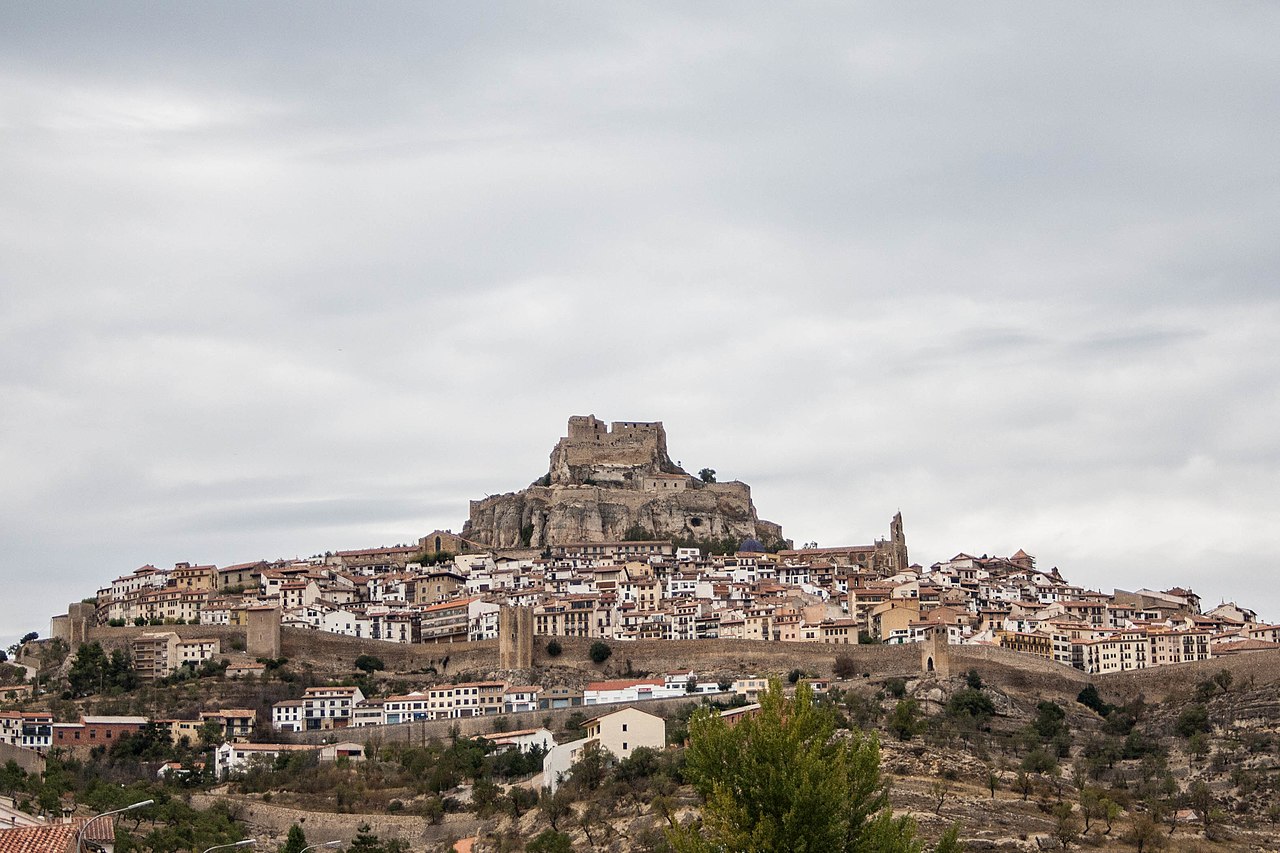
Discover beautiful villages of Castellón It is one of the best plans you can make for a trip. This province of the Spanish Levante combines beautiful coastal towns where you have magnificent beaches with other inland towns that offer you an impressive monumental heritage.
Castellón is surrounded by the provinces of Tarragona to the north, Teruel west and Valencia to the south. And it has a dream coastline with magnificent beaches in its Orange Blossom Coast, which receives this name from the flower of the orange tree, so common in the area. But also spectacular mountain landscapes located in the Irta and Espadán mountain ranges. Both some places and others are home to beautiful villages of Castellón. Let's meet them.
Morella, a trip to the past
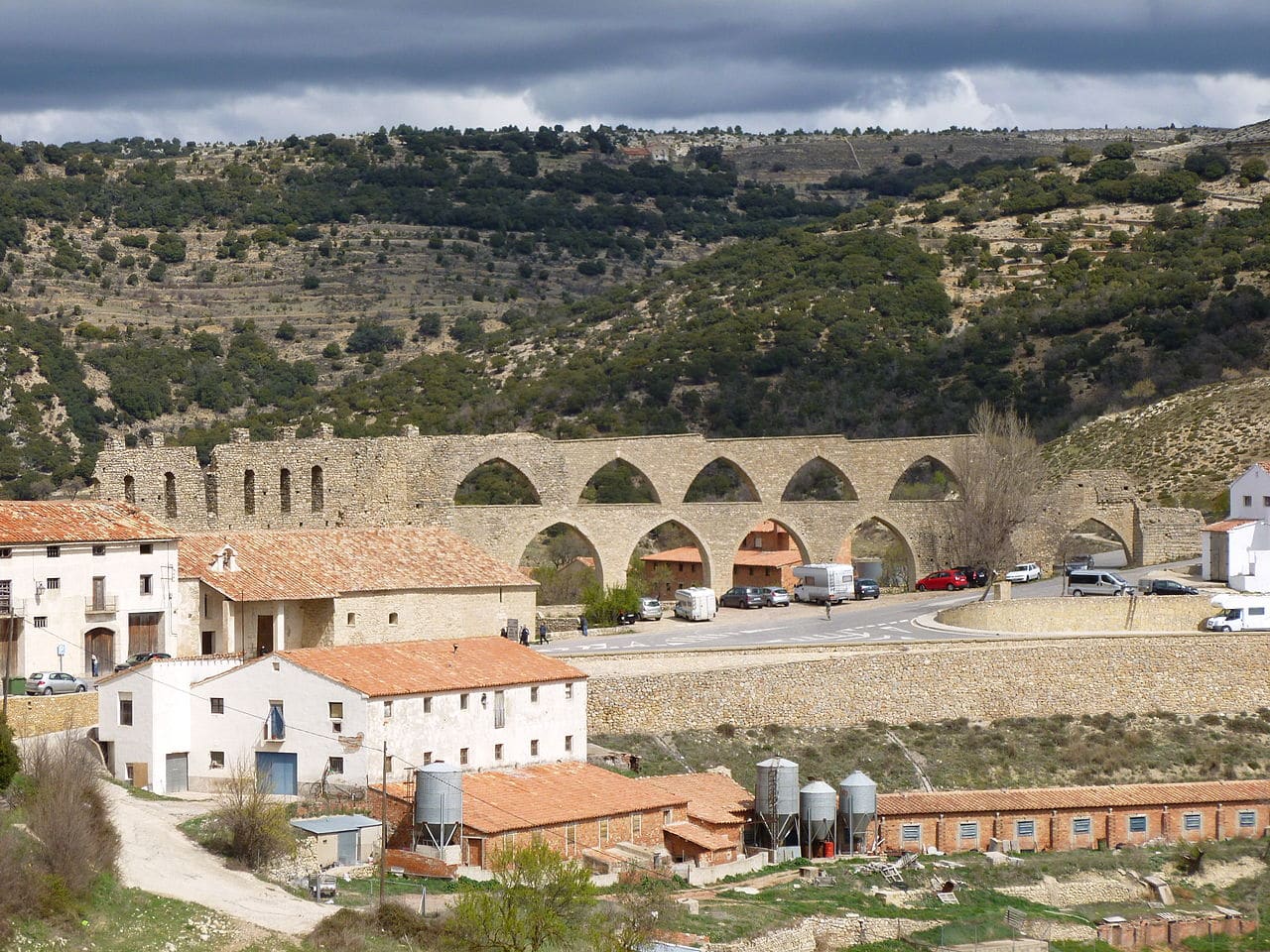
Aqueduct of Santa Lucia, in Morella
Precisely in the maestrazgo you have the town of Morella. Visiting it will make you think that you have traveled to the Medieval. Only the vision of its imposing walls and its castle at the top of the town contribute to that idea. The latter is an Arab fortification from the XNUMXth century that was later reformed. It has a parade ground, the governor's palace and others, the Pardalea tower, cisterns, homage towers, pavilions and retreats, all of which will give you an idea of its large dimensions.
In turn, the aqueduct of Santa Lucia It was built in the XNUMXth century and the Town hall It is a Gothic building from the XV. But this is not the only stately mansion in Morella. We also advise you to visit the Cardinal Ram's house, currently a hotel; the of the Brotherhood of FarmersThat of Studies and the Consell or the fortified house of the Brusca and Creixell. On the other hand, in the prehistoric caves of Morella la Vella there are paintings declared a World Heritage Site.
As for the religious monuments of the Levante town, we recommend you see the archpriest church of Santa María, a gothic building. In it, the impressive doors of the Virgins and the Apostles stand out. But don't miss its spectacular rose windows with stained glass windows from the XNUMXth century and, once inside, its spiral staircase, the sculpted choir, the main altar and the organ of Francis Turull.
Along with it, you should also visit the churches of San Juan, San Miguel and San Nicolás. And, likewise, the convent of San Francisco, a clear example of Valencian Gothic, and the hermitage of Santa Lucía, built in the XNUMXth century. Finally, about twenty kilometers from Morella you have the spectacular Monastery of the Virgin of Vallivana, whose carving from the XIV is the patron saint of the town.
Villafamés, a dream landscape
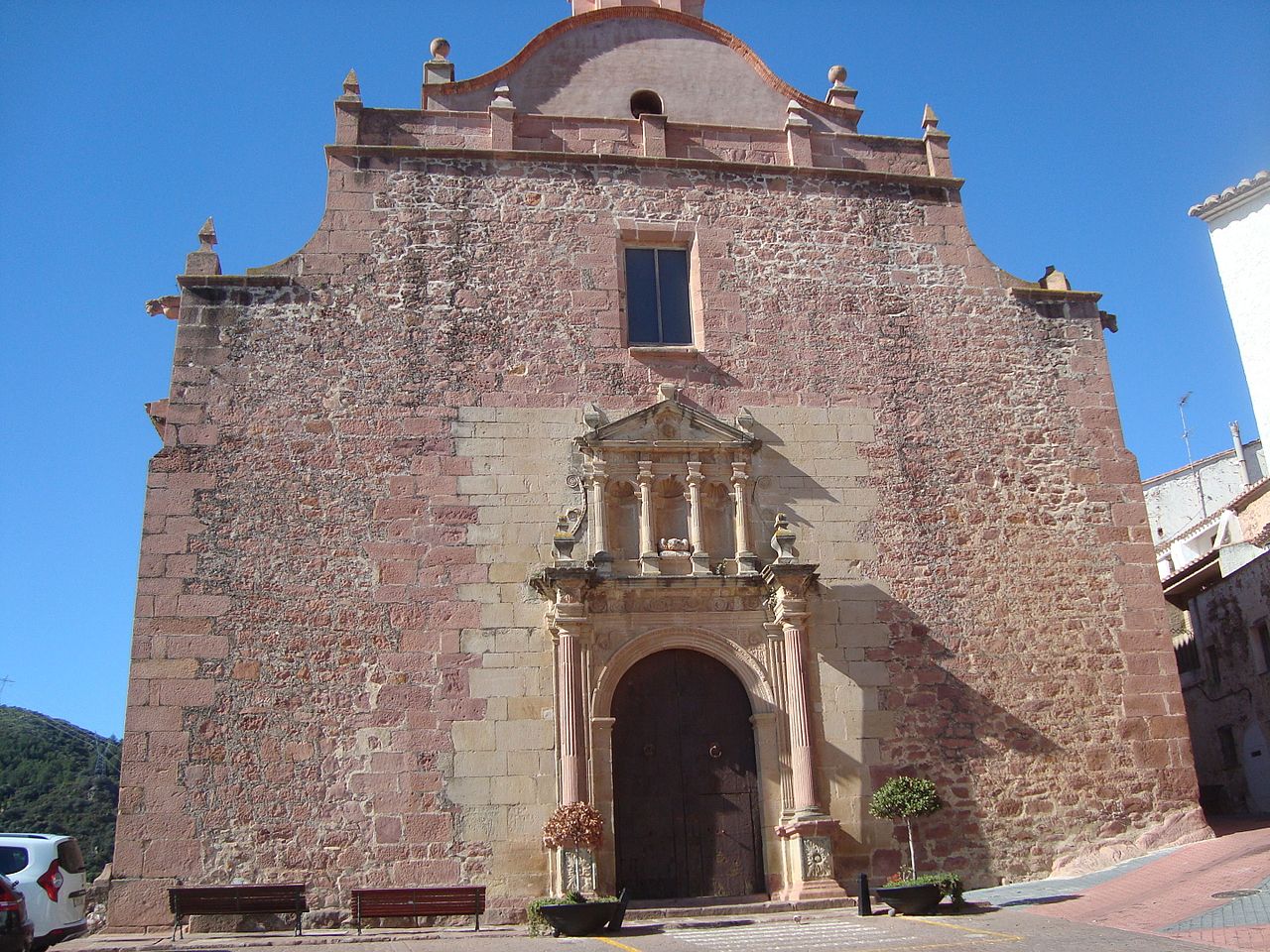
Church of the Assumption in Villafamés, one of the beautiful villages of Castellón
Located on a hill from which you can see the orchard of the Castellón orchard, the small town of Villafamés is also dominated by a walled castle. To get to this, you will have to walk through the narrow and winding streets of the quart, which make up its beautiful old quarter of Muslim origin.
El castle it is also Arab and is completed with several defensive towers, among which the imposing homage tower stands out, as well as other buildings. Equally spectacular is the Batlle Palace, a XNUMXth century building inscribed in the Valencian civil Gothic. In this you can visit the Museum of Contemporary Art Vicente Aguilera.
But Villafamés also stands out for its archaeological remains. Among them, those of Tossal de la Font, from the Neanderthal period; those of the Matutano Cave, from the Upper Paleolithic; those of the Castle Coat, with cave paintings, and those of the town of The Straits-The Corner of Rat, from the Iberian period.
As for the religious heritage of the Castellón town, visit the churches of the blood, medieval construction reformed in the baroque, and of the Assumption, XNUMXth century. And likewise, the Hermitages of San Ramon, built in the eighteenth, and of San Miguel, which even had a hostel for the hermit and for the farmers. As if all this were not enough, Villafamés is very close to the beautiful beaches of Benicasim.
Alcalá de Chivert, another jewel among the beautiful towns of Castellón
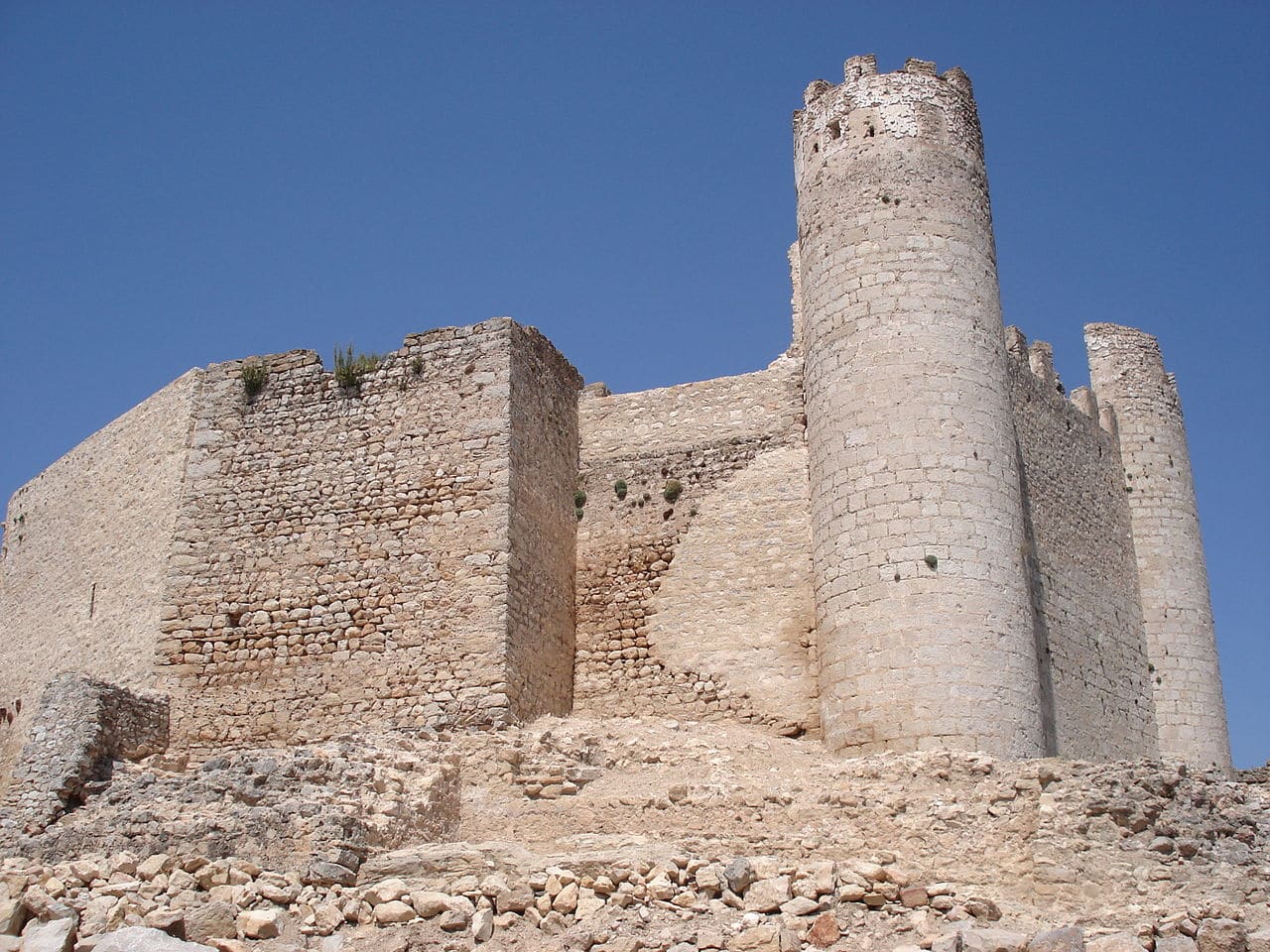
Chivert Castle
Located in the region of Under Mastery, territory of transition between the Costa del Azahar and the mountains of the interior, Alcalá is surrounded by fields of olive and orange trees. It is also watched over by a castle from above, in this case Chivert's. It consists of an Arab walled enclosure from the XNUMXth century and a Templar fortress from the XNUMXth century.
But this is not the only outstanding monument in the Levante town. The actual House of Culture It is in a Renaissance building. And the Cap y Corb and Ebrí towers they were built, respectively, in the XNUMXth and XNUMXth centuries for defensive purposes. For his part, the Prigo of the King It is an obelisk placed on the occasion of the passage of Charles IV through the town on the way to Barcelona in 1802.
No less is the religious heritage of Alcalá. The church of San Juan Bautista It is a beautiful Valencian Baroque building built in the XNUMXth century. Its façade has four portals and a rear bell tower with an octagonal floor plan. We also recommend that you visit the Church of San Cristobal and Hermitages of Calvario and San Antonio, both also from the XVIII. For its part, that of Saint Lucy and Saint Benedict It is from the seventeenth and Chapel of the Virgin of the Forsaken It has a single nave and dome.
Ares del Maestre, a postcard town
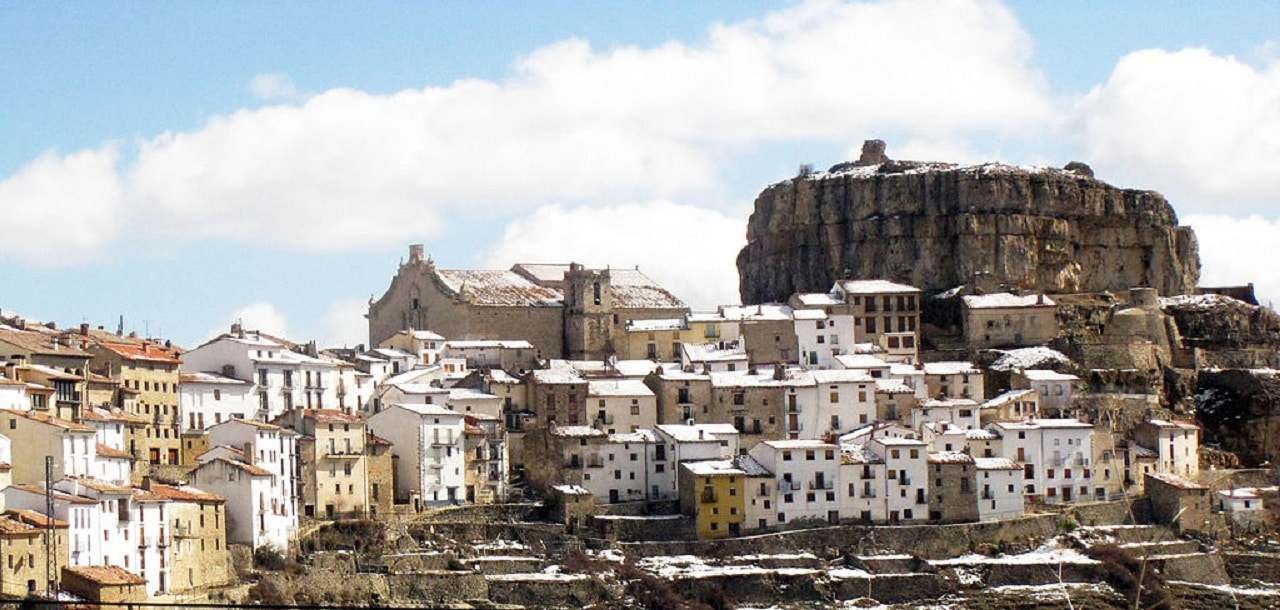
Master's View of Ares
We now arrive at this small town located in the heart of the High Mastery over a thousand meters high. The mere panoramic view of Ares is worth it because it looks like a postcard, with the enormous mola or circular mountain that seems to come out of its very foundations. And, above this, the imposing templar castle built on another from Roman times. In addition, it has the singularity that part of its facilities were excavated in the rock.
Some of the old portals of the walls and many houses of medieval origin are also preserved. This is the case of the primitive cárcel, dated in the thirteenth century. For its part, the City Council Old fish market It is a civil Gothic building in which the Mudejar arches of the XNUMXth century and the Chapter House stand out.
On the outskirts of the villa you have the Torre Beltrans fortified farmhouse, which is believed to have been built in the XNUMXth century on an old Muslim farmhouse. and in the Los Molinos ravine you can see a set of five constructions of this type dating from the XVII or XVIII with their water collection ponds and their piping system.
On the other hand, among the religious constructions of Ares, the Church of the Assumption of Our Lady, built in the XNUMXth century. It is of baroque style, although it was built on the ruins of another previous Romanesque temple. And, next to her, the hermitages of Santa Bárbara and Santa Elena, the latter located in the farmhouse of the same name. Finally, in the municipality of Ares there are several sites with cave paintings. Among these, the Gasulla RavineThat of Remigius Cave or the Coat of the Darrer mill.
Peñíscola, beaches and history
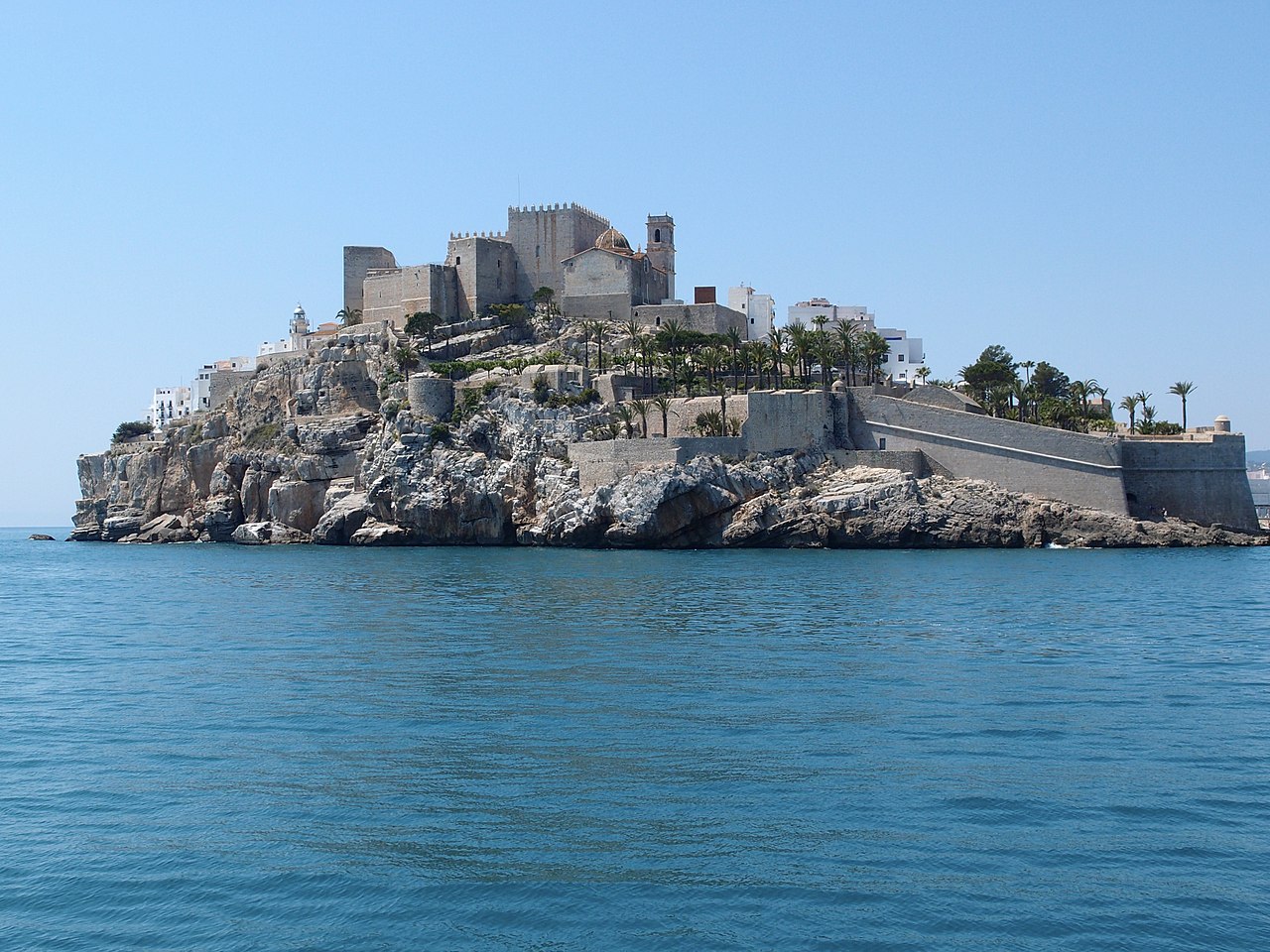
Papa Luna's castle seen from the sea
We end our tour of the beautiful towns of Castellón in the historic Peñíscola, which, precisely, is part of the network of The Most Beautiful Towns in Spain. Forever linked to Pope Moon, who died in his castle, also stands out for its natural beauty, as it is located on a tombolo or isthmus that leads to the Mediterranean. Consequently, it offers you wonderful beaches such as the urban North and South, but also Viudas, Russo or Cala Puerto Azul.
However, we have already mentioned the great symbol of Peñíscola. Its about castle of Papa Luna, located on the rock that divides the town. Romanesque in style, it was built by the Templars at the end of the XNUMXth century. Precisely, in the set that makes up this building, others also stand out, such as the so-called Basilica of the Templars or the guardhouse.
To get to the castle, you will have to go through the historic helmet of the villa, which is at your feet and is also very beautiful. They are narrow and steep streets where you will find white houses adorned with flowers and highlights such as the portals of Sant Pere and Fosc. You will find it very curious Casa de las Conchas, whose facade is covered by them. And very different character has the Bufador, a large gap between rocks through which the sea comes out on stormy days.
On the other hand, we recommend that you visit the Museo del Mar, where you will learn first-hand what life was like for the town's fishermen since ancient times. And in the municipality of Peñíscola you have two ecological jewels: the Sierra de Irta Natural Park and Marjal. In the first of them, you can also see the badum tower, who watched over the sea, and the Hermitage of San Antonio, built in the XNUMXth century and where a pilgrimage is held every Easter Sunday.
Precisely, completing the religious heritage of this town in Castellón is the hermitage of the Virgen de la Ermitana, which houses the image of the patron saint of the town. And the parish church of Santa María, which combines Gothic and Baroque styles as it was built in the XNUMXth century and enlarged in the XNUMXth.
In conclusion, we have told you about five beautiful villages of Castellón. But we could show you many others. For example, Montanejos, in the region of Alto Mijares; Sea Oropesa with its beautiful beaches; Segorbe, with its spectacular old town, or Jerica, with its Mudejar tower of the Bells. All this without forgetting the capital itself, Castellón de la Plana, full of interesting monuments. Dare to know all these beautiful towns of the Valencian Community.